In this edition, we take a look at the history of Abbey Park – one of Leicester’s most beloved green spaces and the history contained inside its iconic walls…
Abbey Park, located in the heart of Leicester, is a historic public park with rich connections to the city’s past, particularly in relation to Leicester Abbey, after which the park is named. The park has evolved over centuries, from a religious site to a leisure space for modern-day visitors.

Picture credit: Pukaar News
The history of Abbey Park dates back to the medieval period, when it was the grounds of Leicester Abbey, a Cistercian monastery established in 1143. The abbey was founded by Richard, Earl of Leicester, and it became an important religious site in the region, playing a significant role in the spiritual and cultural life of Leicester.
The monks of Leicester Abbey were part of the Cistercian order, which was known for its emphasis on manual labour, self- sufficiency, and a simpler monastic life. The abbey’s location on the edge of the River Soar allowed for agricultural activity, and it played a significant role in the local economy.
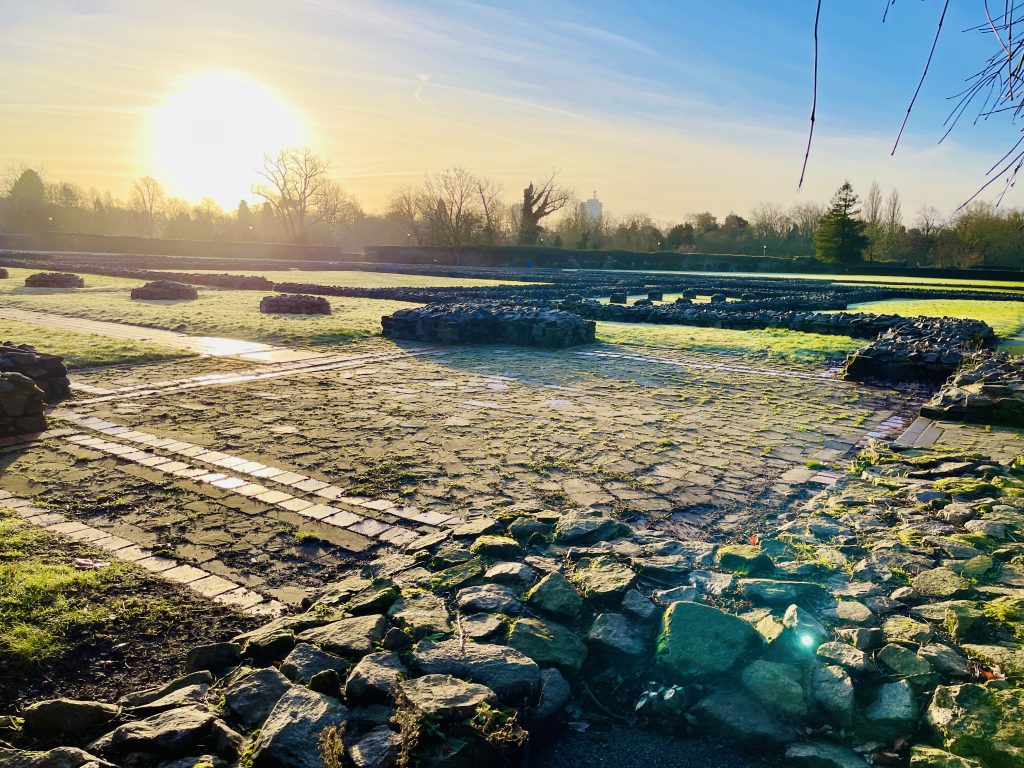
Picture credit: Pukaar News
However, in 1538, during the English Reformation under Henry VIII, the abbey was dissolved, along with many other monastic institutions across the country. The buildings were dismantled, and the land was repurposed, with much of it falling into private ownership. The abbey’s remnants, including its church and cloisters, eventually disappeared, and the site that had once been a place of worship and religious significance slowly evolved into the public park we know and love today.
Remains of Leicester Abbey can be found in the centre of the park, including a few remnants of its ancient walls, A granite slate reminds us of the site’s historic significance.
A monument also stands on the supposed resting place of Cardinal Thomas Wolsey, who died within the walls of the abbey on November 26 1530.
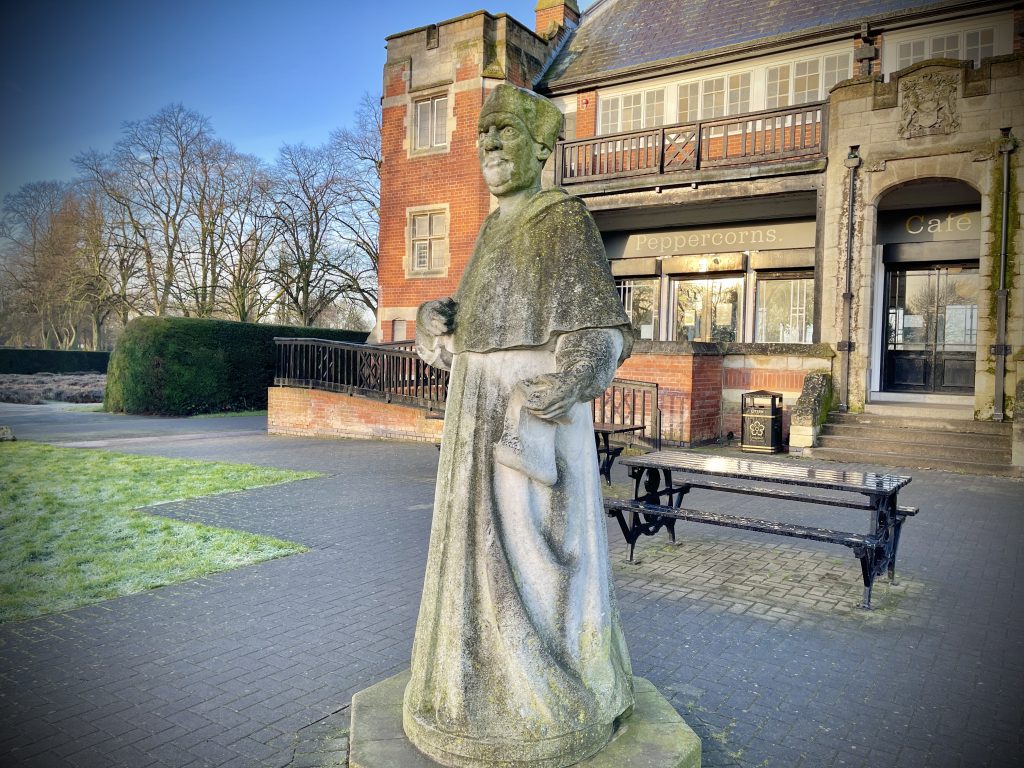
Picture credit: Pukaar News
A statue of the historic figure – one of the last churchmen to play a dominant role in English political life, also stands outside the park’s popular Peppercorn cafe.
In the 19th century, the land that once formed the abbey’s grounds came into public ownership. As Leicester expanded and industrialised, there was a growing demand for public parks and green spaces. In 1877, Abbey Park officially opened to the public, becoming one of the city’s first public parks.
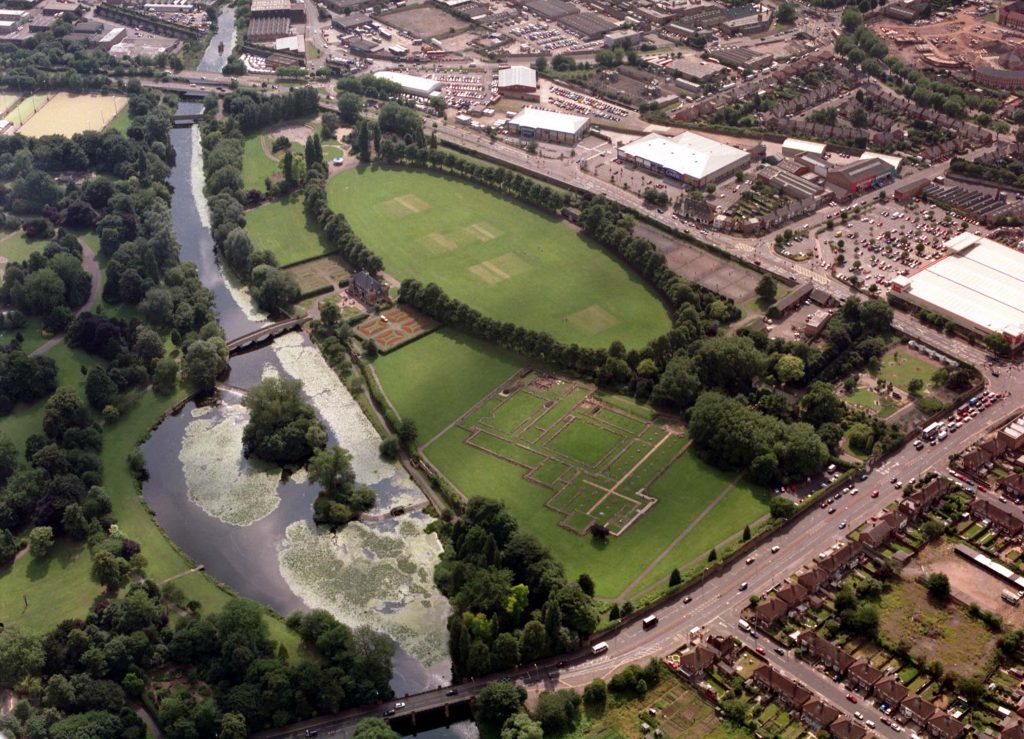
It was officially opened in 1882 by the Prince of Wales, the future King Edward VII, and his wife, the Princess of Wales, on Whit Monday. The grand opening included a royal procession from Leicester Station to Belgrave Gate, with £3,000 raised to decorate the route. Thousands gathered to witness the event.
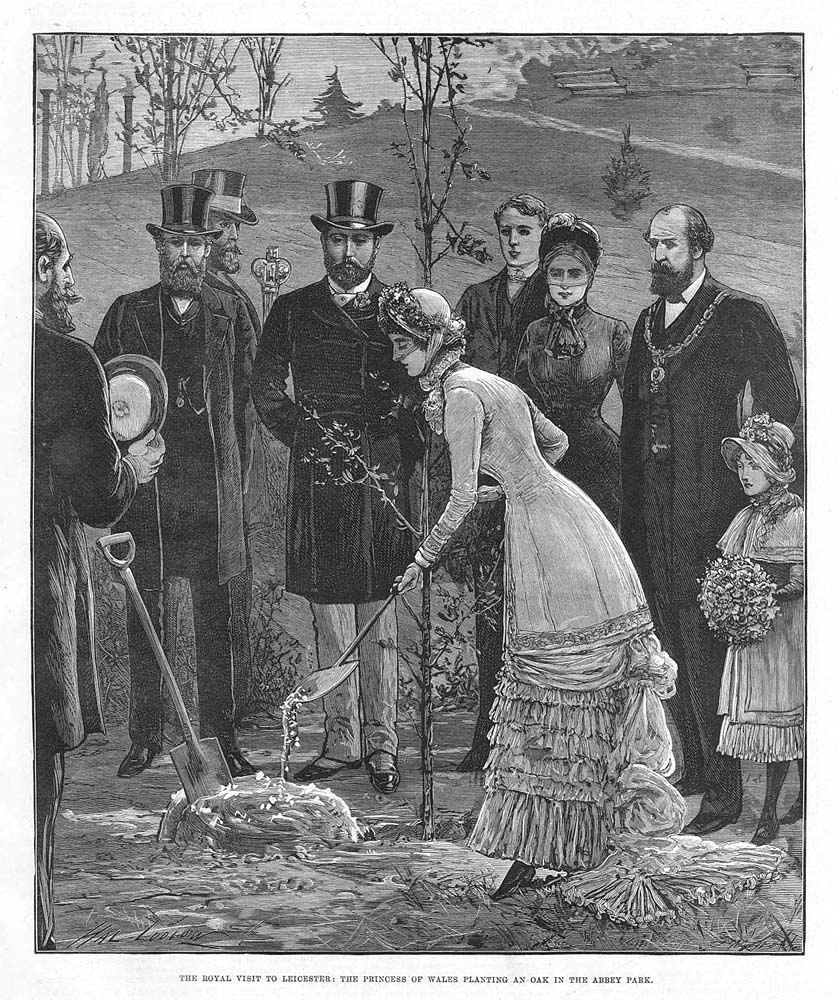
The park was designed to offer the people of Leicester a tranquil retreat from the noise and bustle of the industrial city. Its landscape incorporated elements from its past, with the River Soar running through the park and the old abbey’s grounds providing a historical and scenic backdrop.
The design of Abbey Park during the Victorian era reflected the era’s passion for landscaping and horticulture. The park became known for its well-maintained flowerbeds, a lake, and walking paths.
One of the most notable features was the Abbey Park Pavilion, built in the late 19th century, which added a social element to the park as a space for public events and gatherings.
Over time, the park was further developed with a bandstand, a children’s playground, and various other amenities to cater to a growing urban population.
Today, Abbey Park offers a range of activities for visitors of all ages, including a boating lake, miniature railway, animal corner, playgrounds, and the chance to explore the historic ruins of Leicester Abbey.
The park frequently hosts events such as music festivals, outdoor theatre performances, and seasonal celebrations, including the annual Abbey Park Bonfire and Fireworks Display, which draws thousands of spectators.
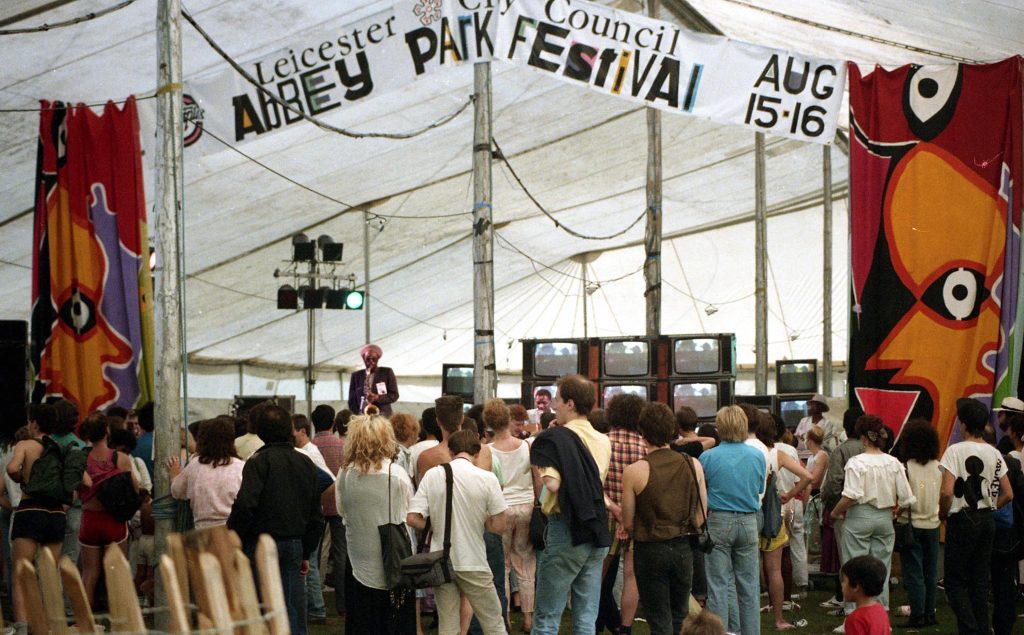
Abbey Park not only serves as a place of relaxation and recreation but also as a significant cultural and historical landmark for the city of Leicester. It provides a tangible connection to the city’s medieval past.
Abbey Park’s history is a microcosm of Leicester’s own transformation over the centuries. From its origins as the
site of Leicester Abbey, through its use as a public park in the 19th century, to its role today as a beloved green space in the city, Abbey Park has witnessed and reflected the changing dynamics of Leicester. Its blend of nature, history, and community makes it an integral part of the city’s heritage, and one which has been enjoyed thoroughly, throughout the ages.




